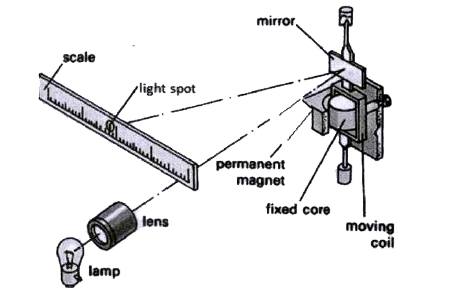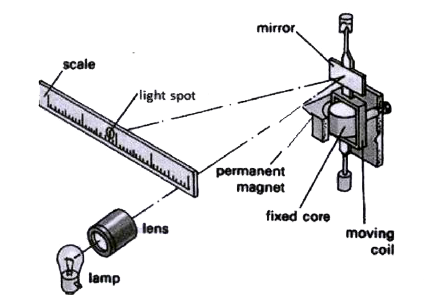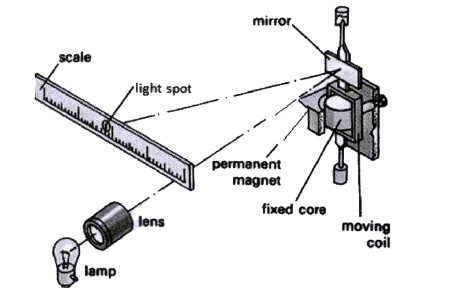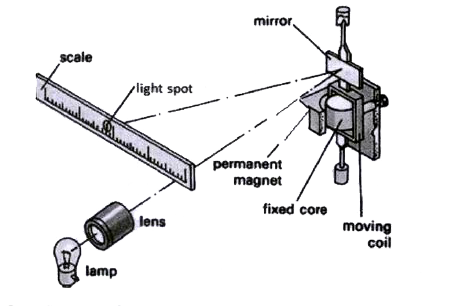According to the Amendment Bill, when a State government approaches the Centre with a dispute, the later shall set up a "Disputes Resolution Committee" consisting of expert members from relevant field at resolve the dispute amicaby.
According to the Amendment Bill, when a State government
dispute, the later shall set up a
consisting of expert members from
relevant filed at resolve members from
The correct Answer is:B
Replace "later" with "latter". Use later when referring to time. Use latter when referring to the second of two persons or things mentioned previously. Hence, 'latter' should be used here.
Topper's Solved these Questions
Similar Questions
Read the following statements. Match them with the different jurisdictions the Supreme Court can exercise - Original, Appellate, and Advisory.
• The government wanted to know if it can pass a law about the citizenship status of residents of Pakistan - occupied areas of Jammu and Kashmir.
• In order to resolve the dispute about river Cauvery the government of Tamil Nadu wants to approach the court.
• Court rejected the appeal by people against the eviction from the dam site.
View SolutionRead the passage given below carefully and answer the questions that follow:
Broadly, two types of disputes keep recurring. One is the border dispute. States have certain claims over territories belonging to neighbouring States. Though language is the basis of defining boundaries of the States, often border areas would have populations speaking more than one language. So, it is not easy to resolve this dispute merely on the basis of linguistic majority. One of the long standing border disputes is the dispute between Maharashtra and Karnataka over the city of Belgaum. Manipur and Nagaland too, have a long-standing border dispute. The carving out of Haryana from the erstwhile State of Punjab has led to dispute between the two States not only over border areas, but over the capital city of Chandigarh. This city today houses the capital of both these States. In 1985, the then Prime Minister Rajiv Gandhi reached an understanding with the leadership of Punjab. According to this understanding, Chandigarh was to be handed over to Punjab. But this has not happened yet.
Mention any two types of disputes between states.
View Solution
Knowledge Check
Which of the following statements are correct regarding Goods and Services Tax (GST) Bill 2011?
(1) The bill seeks to amend the constitution under 115th Constitution Amendment Bill, 2011.
(2) Parliament and state legislatures would have exclusive power to levy GST on imports and inter-state trade respectively.
(3) Appeals on the decision of Dispute Settlement Authority to settle disputes regarding GST lie with the Supreme Court.
(4) Petroleum products are exempted from the bill.
Codes:A1 and 2 onlyB3 and 4 onlyC2 and 3 onlyD1,3 and 4 onlyII. Read the following text and answer the following questions on the basis of the same:
Galvanometer can sense/measure current. Improved mirror galvanometer was developed by William Thomson, later to become Lord Kelvin, in 1858. Thomson intended the instrument to read weak signal currents on very long submarine telegraph cables.
The fundamental problems of transmitting/receiving a singnal through a lengthy submarine cable was that the electrical current tended to be very low (as littles as 1/100,000th of a stadard light bulb). So, it was very difficult to detect it. To solve the problem it was thought that larger amount of electric current would be sent through the line. But Thomson had a different approach. He thought the best response was to devise a device that could read faint signals. The galvanometer, first invented in 1802, was a mean of detecting electric current. It consisted of a needle that was deflected by the magnetic field created by the electric current. But the galvanometers of the day could't detect the weak signals that came through a long underwater cable. But the improved version of galvanometer was highly sensitive to detect the lowest current. The mirror galvanometer consists of a long fine coil of silk-covered copper wire. In the heart of that coil, within a little air-chamber, a small round mirror is hung by a single fibre of floss silk, with four tiny magnets cemented to its back.
A beam of light is thrown from a lamp upon the mirror, and reflected by it upon a white screen or scale a few feet distant, where it forms a bright spot of light, when there is no current on the instrument, the spot of light remains stationary at the zero position on the screen, but the instant a current traverses the long wire of the coil, the suspended magnets twist themselves horizontally out of their former position, the mirror is inclined with them, and the beam of light is deflected along the screen to one side or the other, according to the nature of the current. If positive electric current gives a deflection to the right of zero, a negative current will give a deflection to the left of zero, and vice versa.
The air in the little chamber surrounding the mirror is compressed, so as to act like a cushion, and deaden the movements of the mirror, the mirror is thus prevented from idly swinging about at each deflections.
The mirror galvanometer consists of
 Aa small round mirror attached to a fine coil of silk-covered copper wire.Ba long fine coil of silk-covered copper wire and a small round mirror hung by a single fibre of floss silk, with four thiny magnets cemented to its back.Ca small round mirror attached to four tiny magnets.DNone of the above
Aa small round mirror attached to a fine coil of silk-covered copper wire.Ba long fine coil of silk-covered copper wire and a small round mirror hung by a single fibre of floss silk, with four thiny magnets cemented to its back.Ca small round mirror attached to four tiny magnets.DNone of the aboveII. Read the following text and answer the following questions on the basis of the same:
Galvanometer can sense/measure current. Improved mirror galvanometer was developed by William Thomson, later to become Lord Kelvin, in 1858. Thomson intended the instrument to read weak signal currents on very long submarine telegraph cables.
The fundamental problems of transmitting/receiving a singnal through a lengthy submarine cable was that the electrical current tended to be very low (as littles as 1/100,000th of a stadard light bulb). So, it was very difficult to detect it. To solve the problem it was thought that larger amount of electric current would be sent through the line. But Thomson had a different approach. He thought the best response was to devise a device that could read faint signals. The galvanometer, first invented in 1802, was a mean of detecting electric current. It consisted of a needle that was deflected by the magnetic field created by the electric current. But the galvanometers of the day could't detect the weak signals that came through a long underwater cable. But the improved version of galvanometer was highly sensitive to detect the lowest current. The mirror galvanometer consists of a long fine coil of silk-covered copper wire. In the heart of that coil, within a little air-chamber, a small round mirror is hung by a single fibre of floss silk, with four tiny magnets cemented to its back.
A beam of light is thrown from a lamp upon the mirror, and reflected by it upon a white screen or scale a few feet distant, where it forms a bright spot of light, when there is no current on the instrument, the spot of light remains stationary at the zero position on the screen, but the instant a current traverses the long wire of the coil, the suspended magnets twist themselves horizontally out of their former position, the mirror is inclined with them, and the beam of light is deflected along the screen to one side or the other, according to the nature of the current. If positive electric current gives a deflection to the right of zero, a negative current will give a deflection to the left of zero, and vice versa.
The air in the little chamber surrounding the mirror is compressed, so as to act like a cushion, and deaden the movements of the mirror, the mirror is thus prevented from idly swinging about at each deflections.
How the idly swinging of the mirror of mirror galvanometer is prevented?
 AThe little chamber surrounding the mirror was filled with a viscous liquidBThe mirror was placed in little chamber which was completely vacuumCThe mirror was attached to a springDThe little chamber surrounding the mirror was filled with compressed air
AThe little chamber surrounding the mirror was filled with a viscous liquidBThe mirror was placed in little chamber which was completely vacuumCThe mirror was attached to a springDThe little chamber surrounding the mirror was filled with compressed air
Read the passage given below carefully and answer the questions that follow:
Broadly, two types of disputes keep recurring. One is the border dispute. States have certain claims over territories belonging to neighbouring States. Though language is the basis of defining boundaries of the States, often border areas would have populations speaking more than one language. So, it is not easy to resolve this dispute merely on the basis of linguistic majority. One of the long standing border disputes is the dispute between Maharashtra and Karnataka over the city of Belgaum. Manipur and Nagaland too, have a long-standing border dispute. The carving out of Haryana from the erstwhile State of Punjab has led to dispute between the two States not only over border areas, but over the capital city of Chandigarh. This city today houses the capital of both these States. In 1985, the then Prime Minister Rajiv Gandhi reached an understanding with the leadership of Punjab. According to this understanding, Chandigarh was to be handed over to Punjab. But this has not happened yet.
On which city have Maharashtra and Karnataka a dispute?
View SolutionRead the passage given below carefully and answer the questions that follow:
Broadly, two types of disputes keep recurring. One is the border dispute. States have certain claims over territories belonging to neighbouring States. Though language is the basis of defining boundaries of the States, often border areas would have populations speaking more than one language. So, it is not easy to resolve this dispute merely on the basis of linguistic majority. One of the long standing border disputes is the dispute between Maharashtra and Karnataka over the city of Belgaum. Manipur and Nagaland too, have a long-standing border dispute. The carving out of Haryana from the erstwhile State of Punjab has led to dispute between the two States not only over border areas, but over the capital city of Chandigarh. This city today houses the capital of both these States. In 1985, the then Prime Minister Rajiv Gandhi reached an understanding with the leadership of Punjab. According to this understanding, Chandigarh was to be handed over to Punjab. But this has not happened yet.
Name the leader who reached an agreement/understanding with Punjab and when.
View SolutionRead the passage given below carefully and answer the questions that follow:
Broadly, two types of disputes keep recurring. One is the border dispute. States have certain claims over territories belonging to neighbouring States. Though language is the basis of defining boundaries of the States, often border areas would have populations speaking more than one language. So, it is not easy to resolve this dispute merely on the basis of linguistic majority. One of the long standing border disputes is the dispute between Maharashtra and Karnataka over the city of Belgaum. Manipur and Nagaland too, have a long-standing border dispute. The carving out of Haryana from the erstwhile State of Punjab has led to dispute between the two States not only over border areas, but over the capital city of Chandigarh. This city today houses the capital of both these States. In 1985, the then Prime Minister Rajiv Gandhi reached an understanding with the leadership of Punjab. According to this understanding, Chandigarh was to be handed over to Punjab. But this has not happened yet.
What was the agreement?
View SolutionII. Read the following text and answer the following questions on the basis of the same:
Galvanometer can sense/measure current. Improved mirror galvanometer was developed by William Thomson, later to become Lord Kelvin, in 1858. Thomson intended the instrument to read weak signal currents on very long submarine telegraph cables.
The fundamental problems of transmitting/receiving a singnal through a lengthy submarine cable was that the electrical current tended to be very low (as littles as 1/100,000th of a stadard light bulb). So, it was very difficult to detect it. To solve the problem it was thought that larger amount of electric current would be sent through the line. But Thomson had a different approach. He thought the best response was to devise a device that could read faint signals. The galvanometer, first invented in 1802, was a mean of detecting electric current. It consisted of a needle that was deflected by the magnetic field created by the electric current. But the galvanometers of the day could't detect the weak signals that came through a long underwater cable. But the improved version of galvanometer was highly sensitive to detect the lowest current. The mirror galvanometer consists of a long fine coil of silk-covered copper wire. In the heart of that coil, within a little air-chamber, a small round mirror is hung by a single fibre of floss silk, with four tiny magnets cemented to its back.
A beam of light is thrown from a lamp upon the mirror, and reflected by it upon a white screen or scale a few feet distant, where it forms a bright spot of light, when there is no current on the instrument, the spot of light remains stationary at the zero position on the screen, but the instant a current traverses the long wire of the coil, the suspended magnets twist themselves horizontally out of their former position, the mirror is inclined with them, and the beam of light is deflected along the screen to one side or the other, according to the nature of the current. If positive electric current gives a deflection to the right of zero, a negative current will give a deflection to the left of zero, and vice versa.
The air in the little chamber surrounding the mirror is compressed, so as to act like a cushion, and deaden the movements of the mirror, the mirror is thus prevented from idly swinging about at each deflections.
Mirror galvanometer galvabometer was primarily used to

View SolutionII. Read the following text and answer the following questions on the basis of the same:
Galvanometer can sense/measure current. Improved mirror galvanometer was developed by William Thomson, later to become Lord Kelvin, in 1858. Thomson intended the instrument to read weak signal currents on very long submarine telegraph cables.
The fundamental problems of transmitting/receiving a singnal through a lengthy submarine cable was that the electrical current tended to be very low (as littles as 1/100,000th of a stadard light bulb). So, it was very difficult to detect it. To solve the problem it was thought that larger amount of electric current would be sent through the line. But Thomson had a different approach. He thought the best response was to devise a device that could read faint signals. The galvanometer, first invented in 1802, was a mean of detecting electric current. It consisted of a needle that was deflected by the magnetic field created by the electric current. But the galvanometers of the day could't detect the weak signals that came through a long underwater cable. But the improved version of galvanometer was highly sensitive to detect the lowest current. The mirror galvanometer consists of a long fine coil of silk-covered copper wire. In the heart of that coil, within a little air-chamber, a small round mirror is hung by a single fibre of floss silk, with four tiny magnets cemented to its back.
A beam of light is thrown from a lamp upon the mirror, and reflected by it upon a white screen or scale a few feet distant, where it forms a bright spot of light, when there is no current on the instrument, the spot of light remains stationary at the zero position on the screen, but the instant a current traverses the long wire of the coil, the suspended magnets twist themselves horizontally out of their former position, the mirror is inclined with them, and the beam of light is deflected along the screen to one side or the other, according to the nature of the current. If positive electric current gives a deflection to the right of zero, a negative current will give a deflection to the left of zero, and vice versa.
The air in the little chamber surrounding the mirror is compressed, so as to act like a cushion, and deaden the movements of the mirror, the mirror is thus prevented from idly swinging about at each deflections.
The basic principle of gavanometer is

View Solution
